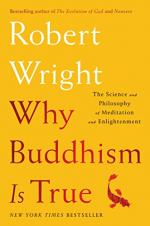
|
Lesson 1 (from Chapters 1-3)
Objective
Students will investigate an author's purpose in using epigraphs: quotes from other literary works included before chapters or before entire works.
Robert Wright's book Buddhism is True includes an epigraph from the early twentieth century work A Dream Play by August Strindberg in order to set the tone for the coming text. In so doing, the author is from the outset reflecting complex notions of sensory awareness and appearance versus reality, two of the text's main themes. Students will use allusion research to illuminate the epigraph's meaning as they move through the novel and reflect back upon the epigraph chosen by the author.
Lesson
Class Discussion: Why might an author begin a book or a chapter with a quote from a different literary work? What other books or movies do you know of that start out with quotes from a different book or movie? What impacts...
Aligned to the following Common Core Standards:
- ELA-Reading: Literature RL.9-10.1, 9-10.10, 11-12.1, 11-12.10
- ELA-Writing W.9-10.3, 9-10.7, 11-12.3, 11-12.7
|
This section contains 9,359 words (approx. 32 pages at 300 words per page) |

|




